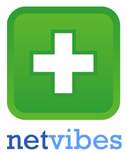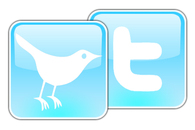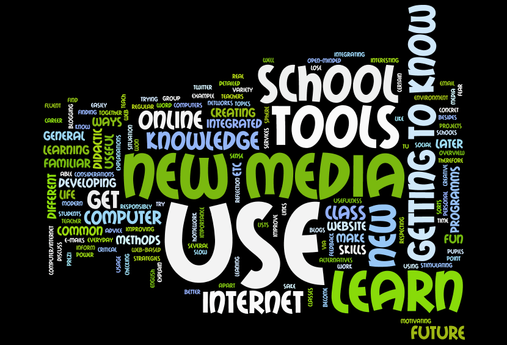Personal Learning Environment (PLE)
In the first four sessions of the course our instructor focussed on showing us tools to create a productive and healthy individual learning environment for each class member, which can further be recommended for our future students.
A PLE is simply your workplace. This can be your desk at home or, adapted to the virtual world, your starting page and/ or some programs or tools you use on your computer.
In the following I will provide a brief description and information about some online tools I found the most useful. All of them are open source, meaning they are free of charge:
Netvibes.com

With the online tool Netvibes you can create your own personal startpage.
Sure, you have an own personal startpage at home, but the problem is that this individual particular page is only located at your home computer, not at the computers at school.
Netvibes is the solution!
With this tool you can create an individual dashboard, with all the information you need when you start your internet browser. These information are displayed through any accessible RSS-feeds, but Netvibes also offers constant linking to the most famous social networks like Facebook or Twitter. That means that you do not have to sign in to the actual network itself. Netvibes does this for you and you can tweet on Twitter or share status reports on facebook from Netvibes.
Here's the link: http://www.netvibes.com
Sure, you have an own personal startpage at home, but the problem is that this individual particular page is only located at your home computer, not at the computers at school.
Netvibes is the solution!
With this tool you can create an individual dashboard, with all the information you need when you start your internet browser. These information are displayed through any accessible RSS-feeds, but Netvibes also offers constant linking to the most famous social networks like Facebook or Twitter. That means that you do not have to sign in to the actual network itself. Netvibes does this for you and you can tweet on Twitter or share status reports on facebook from Netvibes.
Here's the link: http://www.netvibes.com
Delicious.com

Who has not had the following problem: You found a really great page on the web and you want to share it with your friends, but instead of sending the link via e-mail or social network mails you just create a bookmark on your computer. Just like you personalized startpage your bookmarks are only saved locally. Pity, isn't it?
Not with Delicious!
Instead of saving your bookmarks on your computer, you can save them online, where they can be accessed from any other computer. But that's not the only great feature about Delicious. Furthermore you are able to label you bookmarks with tags. With a high certainty this particular tag was previously used by another delicious user to label a different page. As you can see Delicious is not just an online bookmark tool, it is also some sort of social network, because other Delicious users are also able to look at your bookmarks.
Here's the link: http://www.delicious.com/
Not with Delicious!
Instead of saving your bookmarks on your computer, you can save them online, where they can be accessed from any other computer. But that's not the only great feature about Delicious. Furthermore you are able to label you bookmarks with tags. With a high certainty this particular tag was previously used by another delicious user to label a different page. As you can see Delicious is not just an online bookmark tool, it is also some sort of social network, because other Delicious users are also able to look at your bookmarks.
Here's the link: http://www.delicious.com/
Wordle.net

Wordle is a very useful "word cloud" creator. This particular creator (there are several others on the web) gives more prominence to repeatedly or frequently used words within one text. This can be a text you type in yourself, any RSS-feed or even the tags of any Delicious user. Furthermore you can change the font, the layout and the font color afterwards.
Here is the link to the Wordle homepage: http://www.wordle.net
The class used this tool to summarize and illustrate the classes expectations towards this course. The created "word cloud" was presented one week later. Here it is:
Here is the link to the Wordle homepage: http://www.wordle.net
The class used this tool to summarize and illustrate the classes expectations towards this course. The created "word cloud" was presented one week later. Here it is:
Here's just a short selection of the previously mentioned other word cloud creators:
http://tagcloud.com/
http://www.tagxedo.com/
http://tagcloud.com/
http://www.tagxedo.com/
Titanpad.com

Unlike other online documents, the documents created with TitanPad can be worked on simultaneously. This brings enormous working opportunities in school, especially in group work: The class can divided up into groups and each group can work on their own. The group participants do not even have to sit in groups or the same classrooms. Each student can contribute thoughts, solutions or aspects to the topic.
In our class, we used the advantages of TitanPad several times. One example, research on the didactics of behaviorism, cognitivism and constructivism, can be found following this link:
http://titanpad.com/didactic-background
Here are other TitanPad-like document writing pages:
http://piratepad.net
http://typewith.me
In our class, we used the advantages of TitanPad several times. One example, research on the didactics of behaviorism, cognitivism and constructivism, can be found following this link:
http://titanpad.com/didactic-background
Here are other TitanPad-like document writing pages:
http://piratepad.net
http://typewith.me
Twitter.com

Twitter offers a social networking service. It enables the users to send messages, so called tweets, of 140 characters. Each Twitter user is able to subscribe to other Twitter users, in order to receive their tweets. The subscribers are known as followers.
By now, many smartphones do have their own Twitter clients, which enables the users to tweet and receive tweets away from their computers. Netvibes (see above) has an Twitter client of its own.
Here's the link: http://www.twitter.com
By now, many smartphones do have their own Twitter clients, which enables the users to tweet and receive tweets away from their computers. Netvibes (see above) has an Twitter client of its own.
Here's the link: http://www.twitter.com
Flickr.com

Flickr is an online photography and video host. Originally used to share and distribute photographs, Flickr has developed a growing community.
Once signed up, you able to view, share and upload your pictures. You can join groups,which deal with certain topics and label your pictures with tag. Just like the Delicious tags these tags are useful to find similar pictures.
The class used Flickr to collect pictures shot for the topic "English in everyday use". These pictures were uploaded into our "New Media Marburg" group for further usage.
Here's the link to the group: http://www.flickr.com/groups/1526229@N20/
Here's the link to the main page: http://www.flickr.com
Once signed up, you able to view, share and upload your pictures. You can join groups,which deal with certain topics and label your pictures with tag. Just like the Delicious tags these tags are useful to find similar pictures.
The class used Flickr to collect pictures shot for the topic "English in everyday use". These pictures were uploaded into our "New Media Marburg" group for further usage.
Here's the link to the group: http://www.flickr.com/groups/1526229@N20/
Here's the link to the main page: http://www.flickr.com
Evaluation of the web-tools (Task 2)
In general I have to say that some of these web based tools are very useful. Especially the two concerning the creation of a appropriate and healthy learning environment. I use both of them (Netvibes and Delicious) on my personal computer by now.
Most schools provide an account system on their computers in their PC-pools, meaning that every student is granted a small amount of own hard disk drive capacity in school and that he/ she is able to design and create an own learning environment (at least that was the case in my old school). The good thing about the previously mentioned tools (Netvibes & Delicious) is that they can be applied to the computer the students have at home: They can be recreated, redesigned and expanded.
Another considerable advantage of these tools is that the usage of them may build a connection in the children's minds to their home computer and to their learning environment in school as well: They discover how their personal educational virtual environment in school is in some extend connected and dependent on their learning environment at home.
Wordle, as a further web-tool, is an exceptional visual tool especially for a lesson where a new topic is introduced. All of the students can provide a short list of their expectations; these lists can be combined and converted into a word cloud, which reflects the student's preferences vividly. Unfortunately I can not see any further use beyond that function in the classroom for now, but maybe it can be used in some extracurricular work groups, particularly some kind of visual evaluation of surveys for the school magazine.
TitanPad is a tool I will definitely use in my lessons as a teacher. With this tool teachers are able to pass some responsibility for good in-class results. The students are fully in charge of their research and the teacher just needs to recommend good internet research sources and guide the students in their research. Later on the teacher is able to see how much and to which extend each student contributed ideas and information to the document, thus a good transparency is granted.
Concerning Twitter, I do have to admit, that I am not that huge fan of constant social networking. Sure, I do have my Facebook account as well, but mainly to stay in touch with my former classmates from school. I simply do not like sharing every nonsense thought of mine with the rest of the world. Concerning applicability in school lessons, I am mostly worried about the student's concentration, productivity and effectiveness working with this tool, which was originally created as some sort of short-message-based-social-network-platform. I do not believe that my classes will get any satisfying results from the students at all, while working with this tool
Flickr on the other hand can be a very useful tool. Especially for group work similar the the work we did in our course this tool is ideal. Furthermore it can also be used to recapitulate images and information the students have seen and learned in field trips. Additionally these pictures can contribute to a possible presentation the student's might have to do after the field trip.
Considering the student's privacy the groups where photographs in which student's faces can be seen can be locked with a password.
Essentially it is up to every single teacher how and to which extend he/ she uses these presented tools in their own lessons. Some are suitable for particular activities and tasks, some are not. It is up to the future teachers in which depth these tools are used. At least I intend to use some of these tools; not just for the sake of using internet based tools, but for the appropriate applicability and the almost endlessly seeming amount of possibilities these tools offer me.

